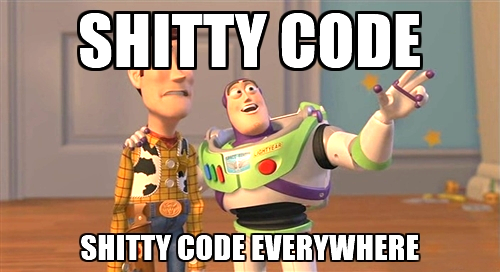Checklist, Security, Scanner, Bigda.., oh sorry mistyping... The words are very familiar and popular. Let’s find out what they do mean.
Is there a way to do mobile app security checking automatically? Fully? Partly? What can be automatized?
Let’s review a checklist which should be passed to reveal a level of app potential danger for end users and vendors. OWASP published a Mobile Apps Checklist (the complete checklist can be found at OWASP website) which contains 87 checks for Android and 74 checks for iOS. All the checks can be divided to those which are performed on the server side and those which are done on the client side (an app). Existing methods of checking app are static and dynamic.

Part one: Automatizzzzzzzzzze
Is there a way to do mobile app security checking automatically? Fully? Partly? What can be automatized?
HackApp Security Scanner performs static checks. And we are working to automate as much checks as possible.
|
Let’s review a checklist which should be passed to reveal a level of app potential danger for end users and vendors. OWASP published a Mobile Apps Checklist (the complete checklist can be found at OWASP website) which contains 87 checks for Android and 74 checks for iOS. All the checks can be divided to those which are performed on the server side and those which are done on the client side (an app). Existing methods of checking app are static and dynamic.
During static checks a motionless mobile app is examined. The following things should be analyzed:
- Constants,
- Resources,
- Methods,
- Third-party libraries.
To perform dynamic checks we should run an app and do following things:
- Altering server-client interactions,
- Reverse protocol engineering,
- Cryptographic mechanisms analyzing.
Statistic checks can be automatized pretty easily. We can code as well some of dynamic checks, for example: Proper SSL implementation, Account Lockout policy, different kinds of injections, etc. This is the good news. The bad news is that it is either difficult or very difficult to do the most of dynamic checks automatically, for example: Logic security (race condition and other), Input validation, Side channel data leaks, etc.
There are tools intended to help developers to test app security. Quite often the tools are open source and should be fine tuned prior to use. You should also tune your environment to run them. After many hours of blogs reading, tuning and installation they are finally ready to use. That are cons. There are some pros as well. Just in a couple of years you’ll get a nice conveyor to scan thousends of apps. It does not matter that you have just two or three apps to scan. It’s hard to stop once you started :)
While installing a new tool in your environment…
...you are welcome to check what we have new.
HackApp Scanner is an online tool. One of its purposes is to perform static checks without pain, desperation and time wasting. It’s always ready to use. An app can be analyzed just in a couple of clicks.
So, there is a tool which does for us a part of our job. The tool is fast and always available. How does it work? You take an app and feed it to the scanner. The scanner produces a list of possible security issues in order of their severity: high security alerts, warnings, informative messages. Descriptions contain files/classes where issues were discovered and some other useful staff.
Finally! We have the list. What should we do next?
